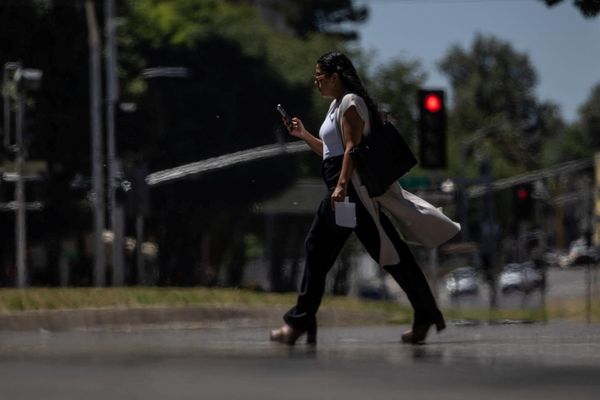
As campaigning in the referendum on an Indigenous Voice to Parliament continues, No campaigners have repeatedly argued against what they call “the Voice of division”.
The results of The Conversation’s exclusive opinion poll suggest something to the contrary: most prospective No voters see the country as already divided, while Yes voters are more likely to see it as united.
As part of an Australian Laureate Fellowship project, we commissioned a series of questions to explore whether Australian voters saw their country as divided, against the backdrop of the current referendum campaigns. These questions were added to the regular Essential opinion poll in its September 5 poll.
Division and the Voice
Polling on Voice voting intention itself shows polarisation on the issue. In the week our questions were asked, Essential showed an overall split of 42% of respondents likely to vote Yes and 48% likely to vote No, with 10% undecided. (The Yes vote has regained some ground in more recent polling.)
But when we asked respondents “How unified or divided do you think Australian society is?”, their perceptions differed vastly between Yes and No supporters.
Of those who see the country as unified, 58% intend to vote Yes, while only 34% intend to vote No. Those who see division have almost exactly opposite intentions: 59% plan to vote No and 34% plan to vote Yes.
| Voting intention | Very unified + quite unified | Neither unified nor divided | Quite divided + very divided |
|---|---|---|---|
| Intend to vote yes | 58% | 38% | 34% |
| Intend to vote no | 34% | 46% | 59% |
| Unsure | 8% | 16% | 8% |
These results are remarkable, and contradict the No campaign rhetoric that it is the Voice to Parliament proposal itself that divides us. Instead, they show only a part of the Australian population believes the country is divided — and those voters overwhelmingly support the No campaign.
Who sees Australia as divided — and why?
Away from the Voice campaign, though, our poll results show societal division in Australia remains relatively mild overall. Of all the respondents we polled, 27% saw Australia as very or quite unified, and 42% as quite or very divided – which leaves 31% of voters who take a neutral point of view.
| Very unified | Quite unified | Neither unified nor divided | Quite divided | Very divided | Very unified + quite unified | Quite divided + very divided | |
|---|---|---|---|---|---|---|---|
| Percent of respondents | 5% | 22% | 31% | 33% | 9% | 27% | 42% |
This compares favourably with countries such as the United States, where polarisation, especially between political camps, now pervades virtually all aspects of society. Australians may have their disagreements, but only 9% of us see the country as very divided.
It also means No voters believe Australia to be considerably more divided, and Yes voters believe the country to be substantially more unified, than Australians do on average.
These perceptions vary among different demographics. Younger participants see more unity in Australia. In contrast, voters over 55 see more division.
Employment status also plays a role: those in paid employment see considerably more unity than those without employment. This is especially true of retirees — who are also likely to be older, of course. Similarly, residents of capital cities see more unity than those outside them.
| Age | Residence | Employment | ||||||
|---|---|---|---|---|---|---|---|---|
| 18-34 | 35-54 | 55+ | Capital | Non-capital | In paid employment | Not in paid employment | Retired | |
| Very unified + Quite unified | 32% | 31% | 20% | 30% | 21% | 33% | 18% | 19% |
| Neither unified nor divided | 33% | 30% | 30% | 31% | 31% | 28% | 39% | 30% |
| Quite divided + Very divided | 35% | 39% | 51% | 39% | 48% | 39% | 42% | 50% |
A No campaign that appeals to perceptions of division
Our poll results show the main appeal of the No campaign’s rhetoric of “the Voice of division” is not to Australians who want to prevent deep political division in the country before it can take root.
Rather, it has attracted a substantial share of voters who think the country is already divided — and whose perceptions of polarisation are considerably greater than everyone else’s. In this sense, rather than offering a voice for unity, the No campaign is giving voice to division.
Conversely, the Yes campaign has yet to convince a sufficiently large group of voters that the Voice offers a pathway towards greater unity — even if those who intend to vote Yes on October 14 are already much more inclined to see the country as united.
Methodology
This content was commissioned by Queensland University of Technology and completed by Essential Research. The survey was conducted online from August 30 to September 3 2023 and is based on 1,151 respondents sourced from online research panels.
The target population is all Australian residents aged 18 and over. Demographic quotas were applied to fieldwork and results are weighted. Full details of the methodology can be found here.
This research was conducted in accordance with the Australian Polling Council code of conduct. The council aims to advance the quality and understanding of public opinion polling in Australia.
This article was republished from The Conversation.







